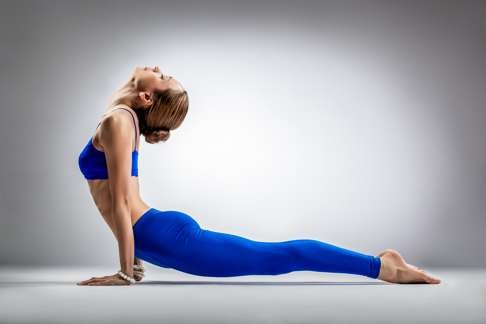
An active life expands the brain and halves Alzheimer’s disease risk
A wide variety of physical activities will boost your brain volume while warding off dementia, long-term study of US adults shows. Also in the news: simple
urine test can measure effects of diet on cancer

From gardening to riding an exercise bike at the gym, a wide variety of physical activities can improve brain volume and cut the risk of Alzheimer’s disease by 50 per cent. The new study, by investigators at UCLA Medical Centre and the University of Pittsburgh, is the first to show that virtually any type of aerobic physical activity can improve brain structure and reduce Alzheimer’s risk. The researchers studied a long-term cohort of 876 patients in the 30-year Cardiovascular Health Study, aged 78 years on average, across four research sites in the US. The participants were surveyed about their physical activity habits, and they also underwent MRI brain scans to measure the volumes of brain structures including those implicated in memory and Alzheimer’s such as the hippocampus. The results of the analysis showed that increasing physical activity was correlated with larger brain volumes in the frontal, temporal, and parietal lobes including the hippocampus. Individuals experiencing this brain benefit from increasing their physical activity experienced a 50 per cent reduction in their risk of Alzheimer’s dementia. Of the roughly 25 per cent in the sample who had mild cognitive impairment associated with Alzheimer’s, increasing physical activity also benefitted their brain volumes. The study, funded by the National Institute of Ageing, was published in the Journal of Alzheimer’s Disease.

10-minute urine test can measure specific compounds from food consumed
Researchers at Georgetown Lombardi Comprehensive Cancer Centre in Washington have developed a method that can quickly evaluate specific food compounds in human urine. They say their method could one day replace unreliable food logs used in population studies examining the effects of diet on cancer and will also help scientists accurately identify the most beneficial anti-cancer foods. The scientists validated the effectiveness of their tool using urine that was collected as part of the Singapore Chinese Health Study. The researchers focused on cruciferous vegetables, which showed a protective benefit against lung cancer in the Singapore study of more than 63,000 people. Cruciferous vegetables, a major food in the Asian diet, include cabbage, Brussels sprouts, broccoli, cauliflower, bak choi and watercress, among others. “We know these foods are beneficial to health, and the 10-minute method we developed, which can test for the presence of specific compounds linked to these vegetables, will help researchers quantify exactly how much of these molecules are being consumed,” says the study’s lead author Marcin Dyba.

Yoga improves quality of life in patients with atrial fibrillation
Yoga improves quality of life in patients with a common cardiac rhythm disorder, according to research published in the European Journal of Cardiovascular Nursing. Paroxysmal atrial fibrillation, which affects 1.5 to 2 per cent of the developed world, has no cure. Management of the condition focuses on relief of symptoms and the prevention of complications such as stroke using cardioversion, ablation and medication. In the study, 80 patients with the condition were randomly assigned to do yoga for one hour, once a week for 12 weeks, or a control group that did not do yoga. After 12 weeks, the yoga group scored higher on a test of mental health, had lower heart rate and lower systolic and diastolic blood pressure than the control group. “It could be that the deep breathing balances the parasympathetic and sympathetic nervous system, leading to less variation in heart rate. The breathing and movement may have beneficial effects on blood pressure,” says researcher Maria Wahlstrom, a PhD candidate at Sophiahemmet University and the Karolinska Institute in Stockholm, Sweden. She adds: “Yoga may improve quality of life in patients with paroxysmal AF because it gives them a method to gain some self-control over their symptoms instead of feeling helpless. Patients in the yoga group said it felt good to let go of their thoughts and just be inside themselves for a while.”